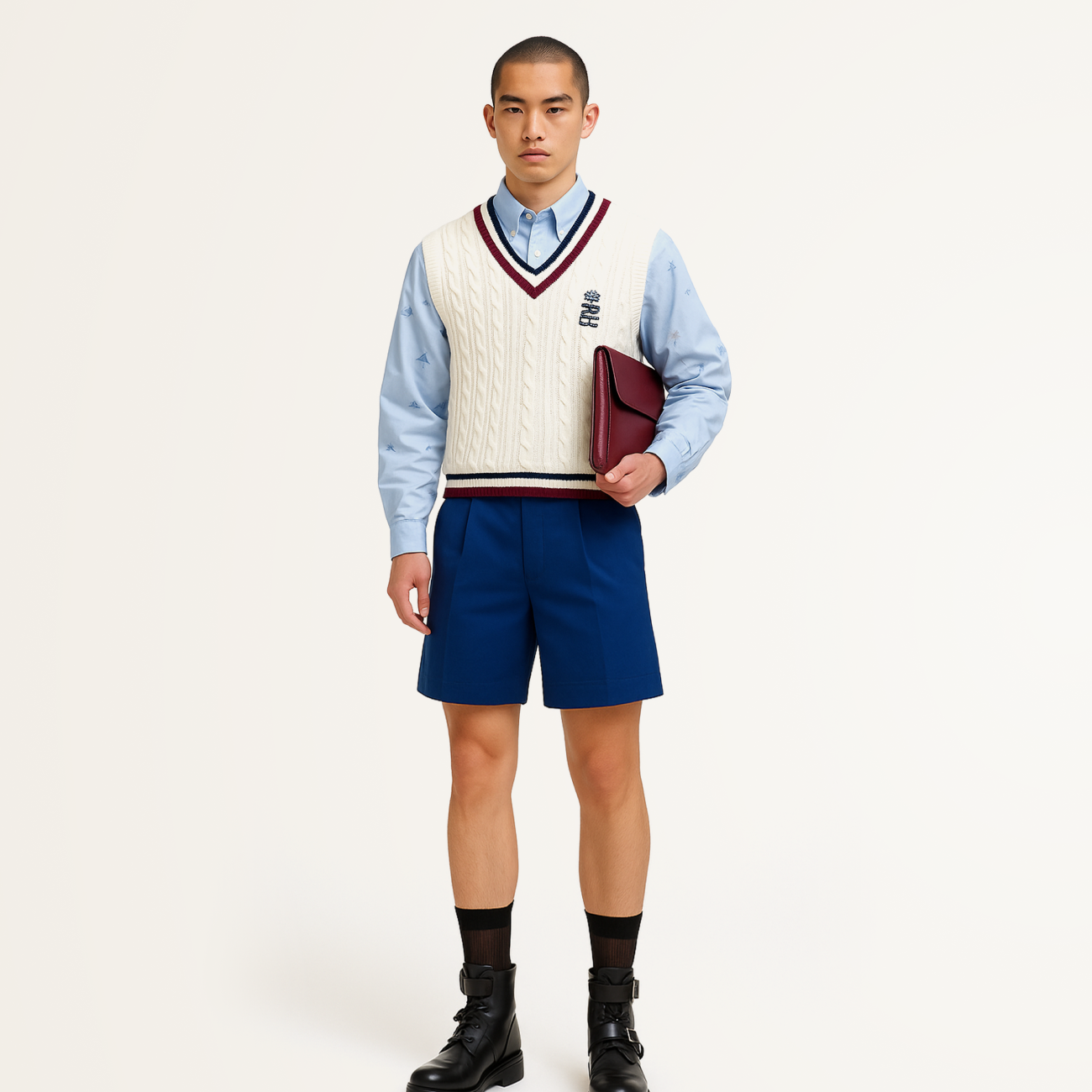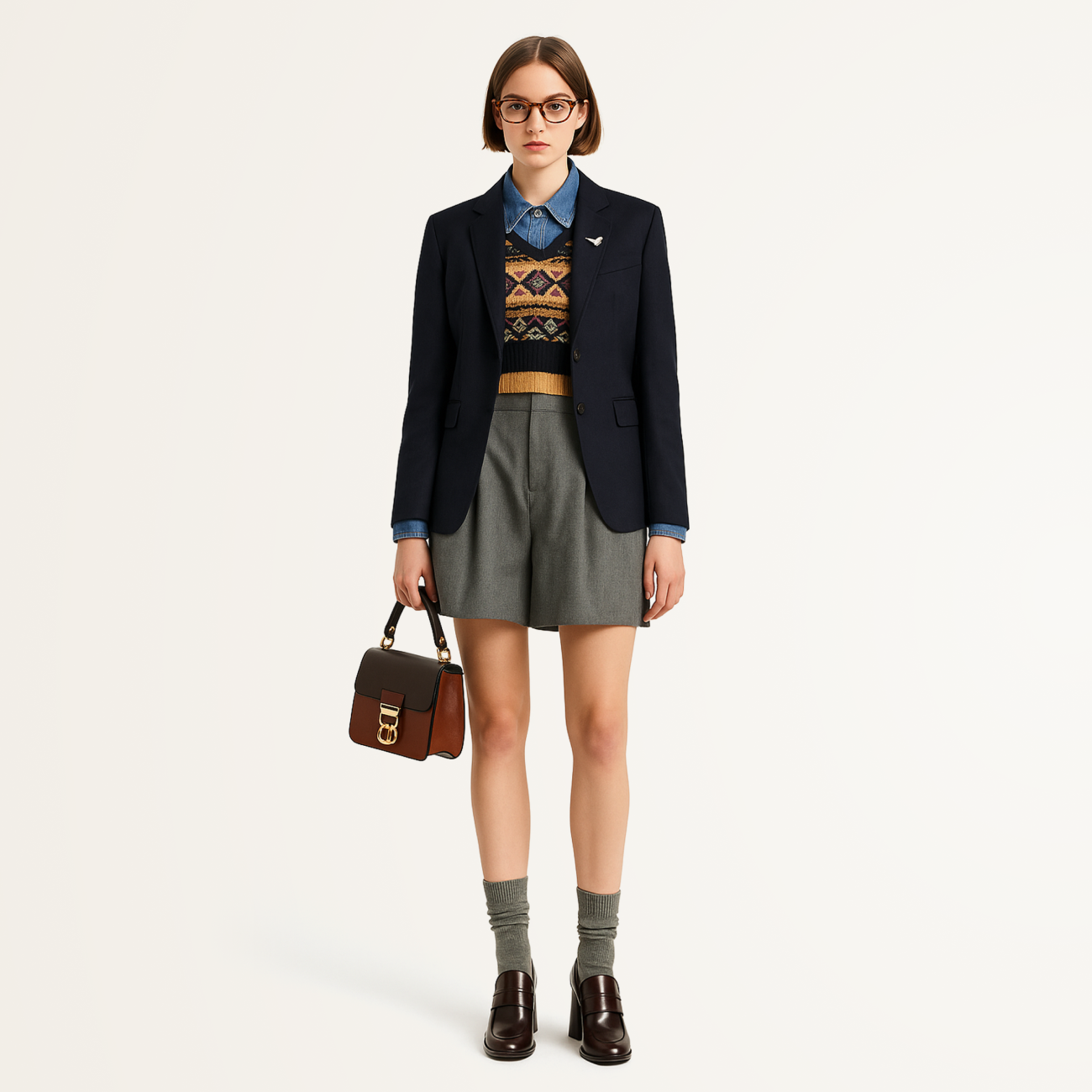Preppy
Preppy is more than just a clothing style; it's a cultural code that embodies the spirit of elite education, tradition, and confidence. This style was born as a visual expression of social status, ambition, and refined taste. It became a symbol of loyalty to classic aesthetics, respect for tradition, and an effortless yet assured elegance. Originally, preppy reflected stability, but today it is enriched with modern nuances of comfort and a nonconformist reinterpretation of the classics.
History
Preppy is a style deeply rooted in American culture, particularly associated with elite schools and universities. The term “preppy” originally referred to students attending private preparatory schools (“pre-college preparatory”), whose goal was to enter prestigious Ivy League institutions on the East Coast of the United States—such as Harvard, Yale, Princeton, and Dartmouth. The style that emerged from these circles reflected status, success, and a sense of belonging to the “golden youth” — those who not only studied at the best schools but also sought to maintain a prestigious image, demonstrating good manners, neatness, and respectability.
The earliest version of the preppy style was influenced by British school uniforms from exclusive boarding schools. However, it truly took shape in the U.S. in the late 1940s as a full-fledged subculture. Uniforms worn by students from affluent families included blazers with natural shoulder lines, fully buttoned Oxford shirts, varsity jackets emblazoned with school or college crests, as well as polo shirts and cotton button-downs. The sporting traditions of the American elite also left their mark: tennis, lacrosse, and golf attire became staples of the look, and footwear such as loafers, boat shoes, and lace-up boots became essential accessories.
For women, the preppy wardrobe included A-line skirts and dresses, club blazers, blouses, Oxford shirts, and classic trousers. Men favored tailored jackets, knit vests, polos, and logo-emblazoned shirts from elite universities. The inclusion of collegiate emblems and a focus on precise detailing—such as the number of buttons on a blazer or the pleats in trousers—helped distinguish preppy style from others.
In the 1960s, preppy made a fashionable comeback, helped by the brand GANT launching its YALE CO-OP line for Yale University students and faculty. The 1970s also played a key role in popularizing the style, especially through film. In Love Story, actor Ryan O’Neal portrayed Harvard student Oliver Barrett IV—a portrayal that cemented the association of the term “preppy” with wealth and privilege when his working-class girlfriend referred to him as such. This image of a smart, successful, and privileged young man elevated the style beyond fashion, making it a symbol of ambition and upper-class status.
The real boom came in the 1980s. Preppy fashion went beyond campus borders with the publication of The Official Preppy Handbook, a kind of bible for preppy enthusiasts that outlined lifestyle, manners, and must-have wardrobe pieces to follow the preppy code. Its success was later reinforced by an updated edition, True Prep. During this time, brands like Brooks Brothers, Lacoste, and Ralph Lauren made preppy style more accessible and widespread, embedding it firmly into mainstream fashion.
Today, preppy continues to retain its classic roots while evolving to suit modern tastes. Variations of the style are present in collections from brands like Tommy Hilfiger, J.Crew, and Ralph Lauren. Preppy has become a symbol of timelessness and refined taste—still grounded in tradition, yet now reinterpreted with comfort and versatility in mind.
Signature elements of the style
Color palette
The preppy style is defined by restrained, classic colors—navy blue, burgundy, white, cream, sand, emerald green, and black. Accents are introduced through muted shades of red, green, and yellow. Color plays a key role in emphasizing the style’s simplicity and sophistication.
Prints
Checks (especially tartan and argyle), stripes, and occasionally diamonds are the main prints in preppy fashion. Their use is deliberate and balanced, maintaining an elegant and composed appearance.
Textures
Fabric quality and texture are fundamental—wool, cashmere, cotton, corduroy, and tweed. These materials add refinement to the look and ensure the longevity of each piece.
Cuts & silhouette
Clean lines, balanced proportions, and structured tailoring form the backbone of the preppy aesthetic. Suits are well-fitted, while shirts and sweaters offer a moderate looseness that provides both comfort and elegance.
Wardrobe essentials
- Blazer: Single- or double-breasted, the blazer is the cornerstone of a preppy look. In dark tones or with a subtle pattern, it lends sophistication to the entire ensemble. Often adorned with a school or university crest.
- Polo and Oxford shirts: Icons of the style, worn alone or layered under a blazer or sweater. Their clean, tailored design is a symbol of polished preppy ease.
- V-neck sweaters and cardigans: Light-knit sweaters and classic cardigans add warmth and texture to the outfit while maintaining a refined silhouette.
- Chinos and straight-leg jeans: Light-colored chinos or dark, straight-cut jeans bring a sense of relaxed sophistication to the look.
- Loafers, Oxfords, and moccasins: Preppy footwear is always crafted from quality materials, maintaining a balance between minimalism and timeless elegance.
Substyles
- Punk-Preppy: A bolder, youth-oriented take on the classic preppy look, featuring striking elements like contrasting inserts and prints. This style plays with traditional shapes by incorporating unexpected textures and accessories such as patches, statement earrings, and chunky belts.
- Modern-Preppy: A style that blends sporty elements with bold accessories, focusing on comfort and practicality for everyday wear. It embraces looser silhouettes and mixes timeless staples with contemporary pieces like chunky sneakers or bright bags.
Email: support@belt-app.com


















